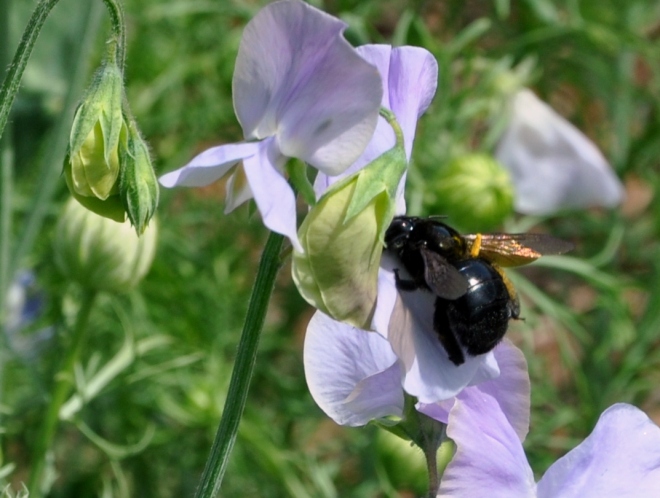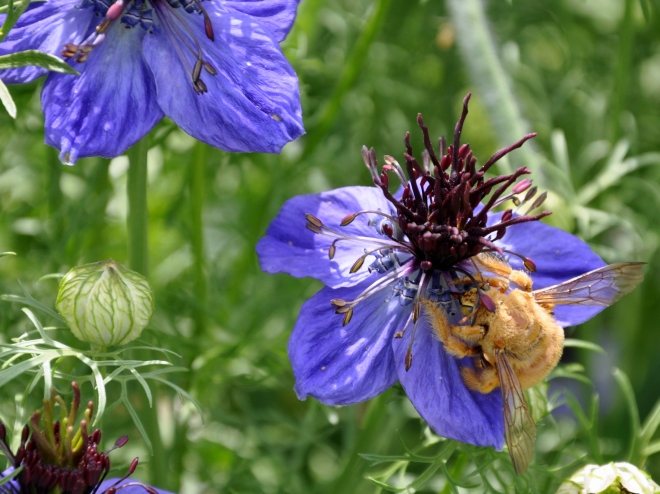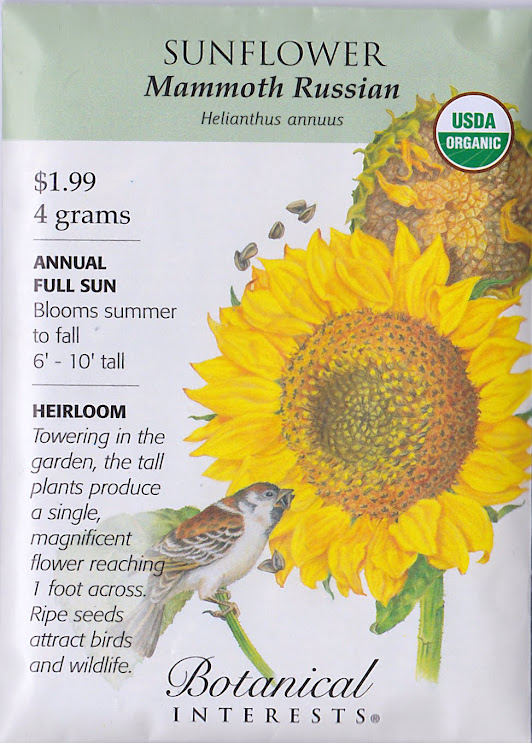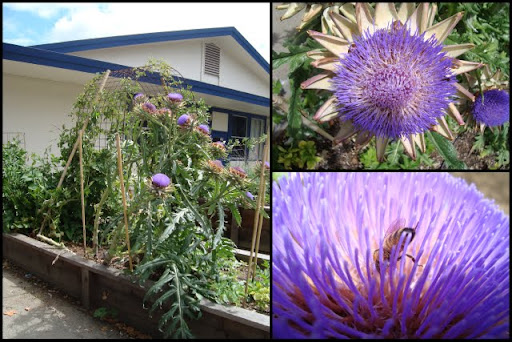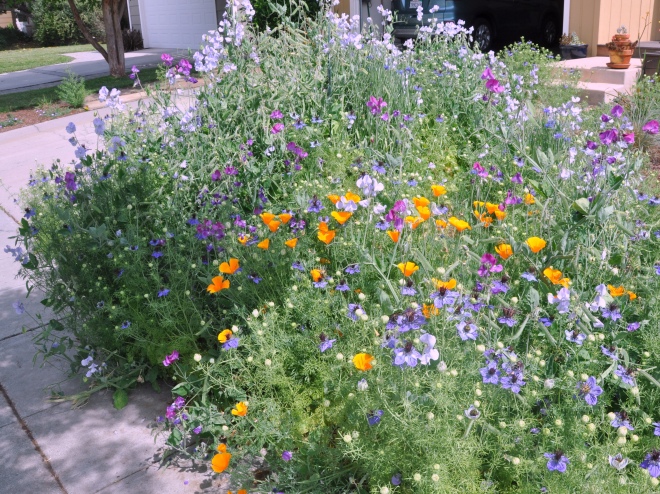
An Amazing Spring: Everything you see here self-seeded thanks to gentle, frequent rain. The Love in a Mist are now blooming, along with California poppies and sweet peas which appear to have swallowed the trellis
Late afternoon is a happy time in the garden. With spring in full bloom, bees and possibly wasps are doing what they do best: pollinating.
One of the many joys of blogging is learning new things. Though humbling, it’s also interesting when a long-held belief is knocked off its center.
For starters, take a look at this all-black bee.
Someone told me years ago that these were carpenter bees. I took that at face value, having no reason to contradict it. They love traveling between my pumpkins and sunflowers. They’re frequent and welcome visitors in my garden, moving quickly from bloom to bloom. I’m always enamored with the yellow coating after they’ve dipped into the center of a flower. They’re docile as well, a nice quality when you’re up close taking pictures.
I was also told they would eat wood, including your house and that they were “bad” bees. I’ve since read that some carpenter bees are more problematic than others, but that overall they should not be viewed as pests but as beneficial pollinators. Are you as confused as I am?
I spotted this beauty today touching down on the love in a mist. Research tells me it’s also a carpenter bee, though the golden color is quite distinct from its shiny black cousin. Varipuncta looks like it’s wearing a golden fur coat, making it hard to distinguish between the bee and the pollen it gathers.
Rounding out the collection is a pollinator formerly known by yours truly as “A bee”, a nondescript, generic term I use for any sort of flying, pollinating “bee” in my garden. Now I’ve been forced to reconsider this description as well, allowing for the possibility that this is a wasp or a hover-fly. Any guesses?
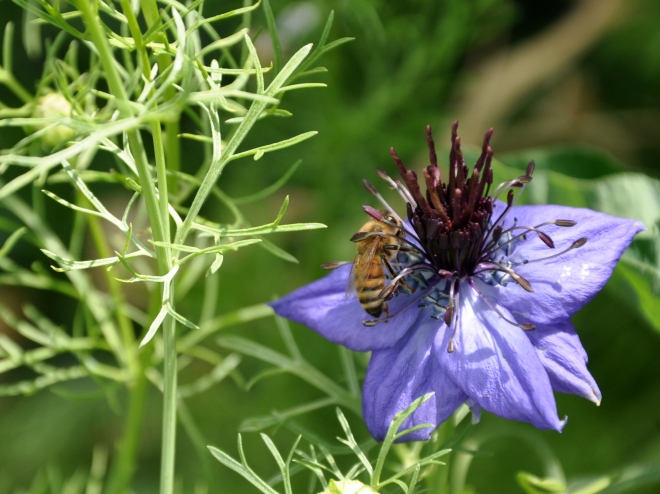 Every year I find a paper wasp’s nest under the eaves, but they’ve never been aggressive. Today I read that yellow jackets and hornets are aggressive, but like most bees, paper wasps are gentle.
Every year I find a paper wasp’s nest under the eaves, but they’ve never been aggressive. Today I read that yellow jackets and hornets are aggressive, but like most bees, paper wasps are gentle.
Why We Need Bees:
If you’re as fascinated as I am, here are a few links:

